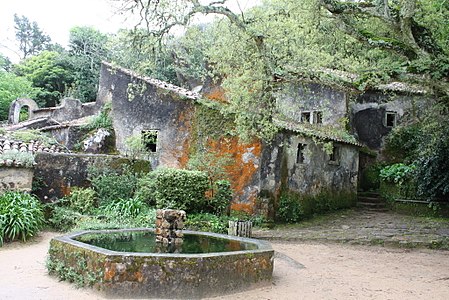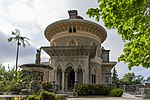Convent of the Capuchos (Sintra)
Buildings and structures in SintraChurches in Lisbon DistrictConvents in PortugalFranciscan monasteries in PortugalGothic architecture in Portugal ... and 1 more
Medieval churches

The Convent of the Friars Minor Capuchin, popularly known as the Convent of the Capuchos (Portuguese: Convento dos Capuchos), but officially the Convento da Santa Cruz da Serra de Sintra ("Convent of the Holy Cross of the Sintra Mountains"), is a historical convent consisting of small quarters and public spaces located in the civil parish of São Pedro de Penaferrim, in Sintra Municipality, Portugal. Its creation was associated with the Portuguese Viceroy of India, D. João de Castro, and his family, but became a pious community of reclusive clergy that continued to occupy cramped humble spaces in the complex until the religious orders were abolished in Portugal.
Excerpt from the Wikipedia article Convent of the Capuchos (Sintra) (License: CC BY-SA 3.0, Authors, Images).Convent of the Capuchos (Sintra)
Caminho da Boca da Mata,
Geographical coordinates (GPS) Address Nearby Places Show on map
Geographical coordinates (GPS)
| Latitude | Longitude |
|---|---|
| N 38.784436111111 ° | E -9.4382555555556 ° |
Address
Páteo do Tanque
Caminho da Boca da Mata
2705-255 (Colares)
Portugal
Open on Google Maps










